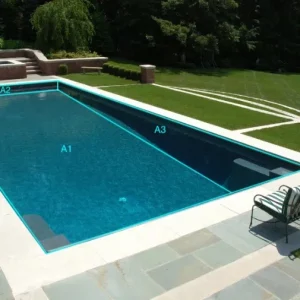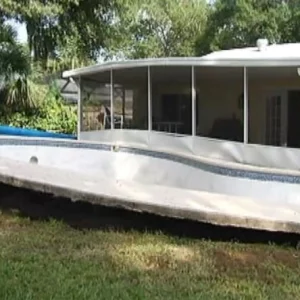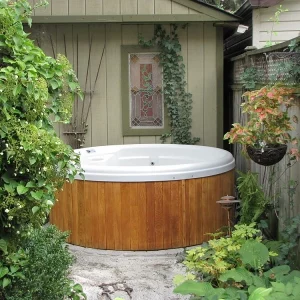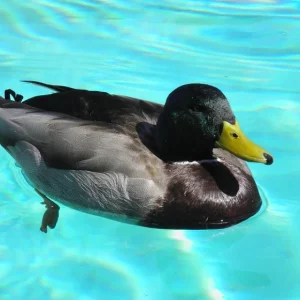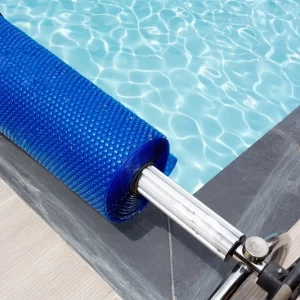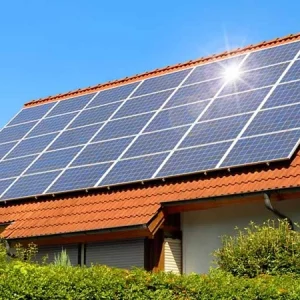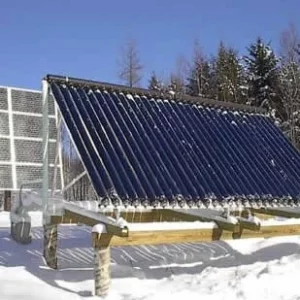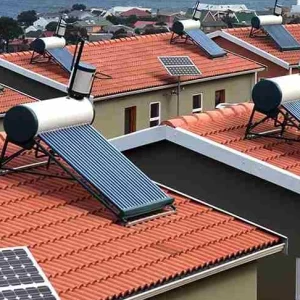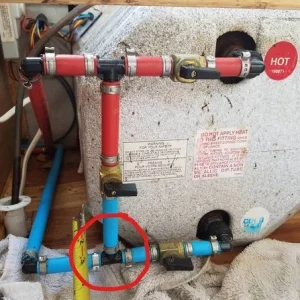Nothing beats a refreshing swim on a sunny day, but wouldn’t it be incredible to enjoy the warmth of your pool even on chilly evenings? The good news is, it’s possible. But how can we heat our pool without a heater? There are several ways to do it and it is discussed in detail in this comprehensive guide. Here are ten cost-effective methods to heat your pool without any heater. It can be used to naturally heat your pool, ensuring you can enjoy a warm dip anytime.
How to Heat a Pool Without a Heater?
1. Solar Pool Covers
A solar pool cover (also known as a solar blanket) can be your pool’s best friend. It prevents heat loss from the water when the temperature drops at night. It also adapts and magnifies the sun’s heat during the day, raising your pool’s temperature without any energy costs. The cover acts like a greenhouse, ensuring the warmth doesn’t escape.
2. Solar Rings and Squares
If a full cover is not to your liking, consider solar rings or squares. These are smaller, independent pieces that collectively cover the pool surface. Solar rings and squares have magnets around the edges that interlock, creating a uniform layer of coverage. Like solar covers, they also harness solar energy, helping to heat your pool naturally.
3. Liquid Solar Covers
One of the easiest of all solutions. A liquid solar cover forms an invisible barrier on the surface of your pool. This reduces water evaporation, which is a leading cause of heat loss. This pool heating method is hassle-free, inexpensive, and an efficient way to retain the pool’s heat.
4. Solar Panels
Solar panels are a greener, cost-effective solution to heat your pool without a traditional heater. Solar panels, when installed properly, can collect sunlight and convert it into energy to heat your pool. They require an initial investment but can save you a substantial amount in heating costs over time.
5. Windbreaks
Strong winds can rob your pool of its heat. Windbreaks—like fences, hedges, or privacy screens—can keep your pool protected from the chilling effect of the wind. Moreover, they can offer privacy and contribute to the aesthetic appeal of your pool area.
6. Solar Sun Rings
Solar sun rings are similar to solar blankets but come in smaller sizes. These inflatable discs absorb sunlight and transfer the heat to the pool water. They are easy to install, remove, and store, making them a popular choice among pool owners.
7. Using Dark Pool Liners
This is a simple yet effective method. Dark colors absorb more sunlight and consequently more heat. This heat is then transferred to your pool water, naturally raising its temperature.
8. Strategic Landscaping
Strategic landscaping not only enhances the beauty of your pool area but can also contribute to heating your pool. Planting trees and shrubs that provide shade can reduce water evaporation and heat loss, while sun-soaked rocks and patios can radiate heat, naturally warming your pool.
9. Pool Heat Pumps
A pool heat pump might not be the conventional heater you are trying to avoid, but it is a more energy-efficient solution. These pumps draw in warm air, intensify the heat with a compressor, deliver it to the water, and push out the cooler air.
10. Warm Water Exchange
A simple trick to heat your pool is by warm water exchange. This involves partially draining the cooler water and replacing it with warmer water. Be aware, however, that this method requires a reliable and cost-effective warm water source.
Conclusion
Heating a pool without a heater is environmentally friendly and cost-effective. From using solar covers to strategic landscaping, each method can significantly contribute to extending your swimming season. Remember, the method you choose will depend on your individual circumstances—climate, budget, and pool size. So why wait? Dive into these solutions and enjoy a warm, inviting pool without the high costs or energy consumption of traditional heaters.
- Swimjoy Solar Panels 2023: In-Depth Review & Insights - June 29, 2024
- How to Calculate Your Pool’s Square Footage Accurately? - October 15, 2023
- Pool Expansion Guide: Making Your Existing Pool Bigger! - October 15, 2023

